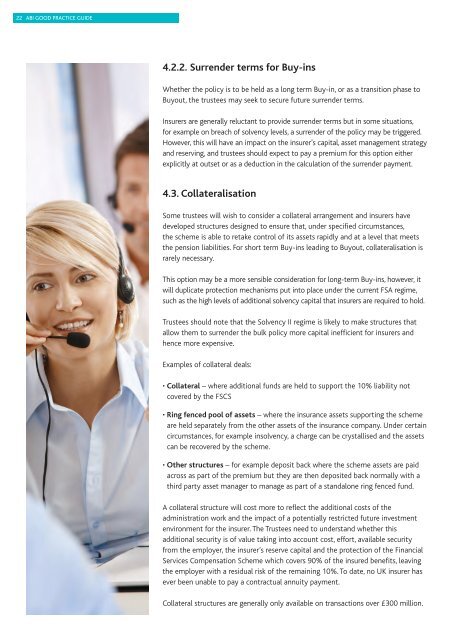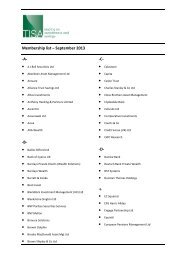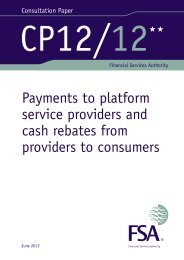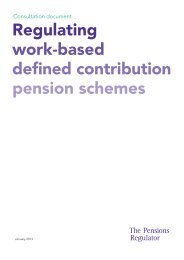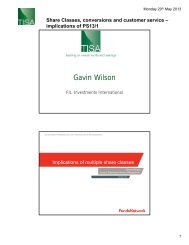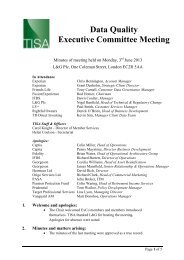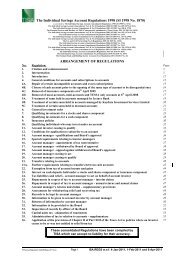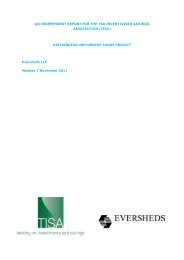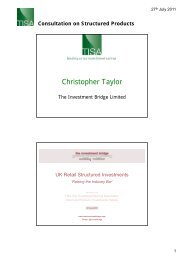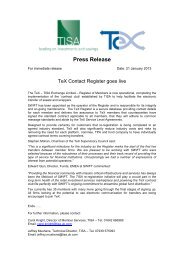Bulk Insured Pensions - A Good Practice Guide - NAPF
Bulk Insured Pensions - A Good Practice Guide - NAPF
Bulk Insured Pensions - A Good Practice Guide - NAPF
Create successful ePaper yourself
Turn your PDF publications into a flip-book with our unique Google optimized e-Paper software.
22 ABI GOOD PRACTICE GUIDE<br />
4.2.2. Surrender terms for Buy-ins<br />
Whether the policy is to be held as a long term Buy-in, or as a transition phase to<br />
Buyout, the trustees may seek to secure future surrender terms.<br />
Insurers are generally reluctant to provide surrender terms but in some situations,<br />
for example on breach of solvency levels, a surrender of the policy may be triggered.<br />
However, this will have an impact on the insurer’s capital, asset management strategy<br />
and reserving, and trustees should expect to pay a premium for this option either<br />
explicitly at outset or as a deduction in the calculation of the surrender payment.<br />
4.3. Collateralisation<br />
Some trustees will wish to consider a collateral arrangement and insurers have<br />
developed structures designed to ensure that, under specified circumstances,<br />
the scheme is able to retake control of its assets rapidly and at a level that meets<br />
the pension liabilities. For short term Buy-ins leading to Buyout, collateralisation is<br />
rarely necessary.<br />
This option may be a more sensible consideration for long-term Buy-ins, however, it<br />
will duplicate protection mechanisms put into place under the current FSA regime,<br />
such as the high levels of additional solvency capital that insurers are required to hold.<br />
Trustees should note that the Solvency II regime is likely to make structures that<br />
allow them to surrender the bulk policy more capital inefficient for insurers and<br />
hence more expensive.<br />
Examples of collateral deals:<br />
• Collateral – where additional funds are held to support the 10% liability not<br />
covered by the FSCS<br />
• Ring fenced pool of assets – where the insurance assets supporting the scheme<br />
are held separately from the other assets of the insurance company. Under certain<br />
circumstances, for example insolvency, a charge can be crystallised and the assets<br />
can be recovered by the scheme.<br />
• Other structures – for example deposit back where the scheme assets are paid<br />
across as part of the premium but they are then deposited back normally with a<br />
third party asset manager to manage as part of a standalone ring fenced fund.<br />
A collateral structure will cost more to reflect the additional costs of the<br />
administration work and the impact of a potentially restricted future investment<br />
environment for the insurer. The Trustees need to understand whether this<br />
additional security is of value taking into account cost, effort, available security<br />
from the employer, the insurer’s reserve capital and the protection of the Financial<br />
Services Compensation Scheme which covers 90% of the insured benefits, leaving<br />
the employer with a residual risk of the remaining 10%. To date, no UK insurer has<br />
ever been unable to pay a contractual annuity payment.<br />
Collateral structures are generally only available on transactions over £300 million.


